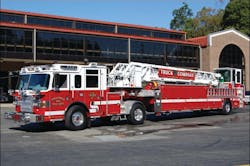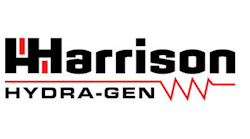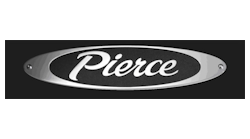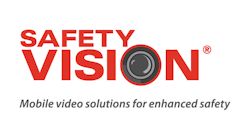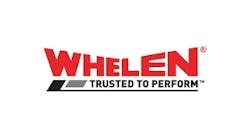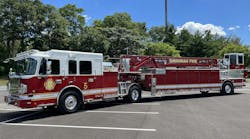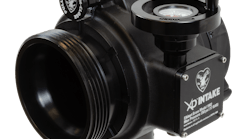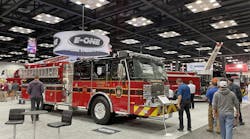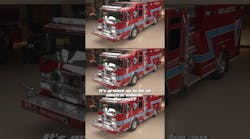Like a great movie screenplay that deserves a sequel, this month we are going to return to visit with the Hollywood Volunteer Fire Department in Saint Mary's County, MD to review their 2009 Pierce tractor drawn ladder truck. While our first two featured apparatus covered in the "Innovative Apparatus on the Street" series were engine company units, we should devote some equal time to a well-designed ladder company apparatus.
While the Hollywood Fire Department is a relatively young organization having been formed in 1957, the department only recently began to provide truck company service to their first-due area. How they acquired their first ladder truck and trained to provide this important service is unique and provided the basis for their experience to develop the design for their new tractor-drawn ladder truck. During 2004 the department began to plan for the acquisition of a used ladder truck to determine the feasibility to provide truck company service from their station that historically had provided engine company and rescue squad capabilities. A used tractor-drawn ladder truck was purchased from Arlington County, VA, for the members to train on for the first few months.
This apparatus was a 1974 Hahn trailer equipped with a 100-foot Grove aerial ladder that had been completely rebuilt by Ladder Towers Incorporated during 1991. The original Hahn tractor had been replaced with a Simon Duplex Olympian four-door cab unit with the trailer compartments and aerial hydraulic system overhauled and enhanced to current product design. As Arlington County was moving to rear-mount aerial devices, the tractor-drawn ladder became surplus and was modified by department members to suit the operations in Hollywood. After extensive training, supplied by the Maryland Fire and Rescue Institute, Truck 7 was placed into service in early 2005.
As a result of numerous working fires and constant in-service training department members quickly became acclimated to ladder company work and during 2008 began to develop specifications for a new tractor-drawn aerial. The result was a new Pierce Arrow XT 100-foot tiller ladder that was delivered to the department in August of 2009. The apparatus was designed by the department's apparatus committee which was headed by Assistant Chief Doug Insley.
Truck 7 carries an impressive array of hand tools, saws, power tools and most importantly ground ladders. The apparatus is powered by a Cummins ISM engine rated at 500-horsepower through an Allison EVS-4000 transmission. The tractor is built on a 149-inch wheelbase with an overall vehicle length of 59 feet, three inches. The aluminum cab has seating for six personnel and is protected by a steel reinforced front bumper which provides a mounting area for two New York roof hooks. Each of the four cab doors on the tractor are provided with polished stainless steel scuff plates at the door frames as well as inside of each door to protect the paint from damage when entering or exiting the cab.
Warning Lights and Safety Features
Warning lights consist of a Whelen 88-inch wide LED light bar on the cab roof as well as side facing LED light bars that are mounted to each side of the air conditioner housing. Forward-facing cab warning lights include Whelen LED lights in bezels above the headlamps together with twin pedestal Mars lights and a roto ray light mounted below the windshield. LED strip lights are mounted in the rub rails down each side of the trailer to provide protection together with cornering lights mounted at the rear wheel well panel to assist the tillerman when maneuvering the trailer at night time.
The cab and trailer are provided with a unique arrangement of four Safety Vision cameras with screens inside of both the cab and tiller box to monitor the front, rear and both sides of the trailer. A stainless steel FDNY-style down view mirror mounted over the windshield allows the driver to locate the corner of the front bumper to eliminate any blind spots when positioning the apparatus. One of the most critical aspects of driving and positioning a tractor-drawn aerial ladder is to be able to have the trailer in a perfect straight line with the tractor during highway operations. There have been a number of marking and lighting products that have been utilized to assist the tillerman to quickly determine if the trailer is in line with the tractor. Truck 7 utilizes two green LED lights that are positioned on the rear wall of the tractor which, when properly aligned, can be sighted by the tiller man down the inside of the ladder sections under all daytime and nighttime lighting conditions.
Tractor Body Set up
The apparatus trailer is constructed of aluminum and is provided with 14 enclosed compartments that are equipped with hinged doors. While some purists would prefer roll-up shutter doors on aerial equipment, it is important to evaluate the use of the enclosed compartment space particularly on lower body compartments less than 30 inches in height. There are times where a roll up door assembly takes up some valuable space at the top of the compartment which would preclude the mounting of equipment and reels in this area. The design of the trailer compartments on Truck 7 wisely utilized hinged doors to maximize the space available for equipment, trays and reels.
The left side trailer compartments carry an assortment of equipment including two electric fans, two positive pressure ventilation fans (PPV), a stokes basket, two cable reels carrying 200 feet of 10/4 cable, salvage covers, buckets, portable lights and forcible entry tools. The right side compartments carry additional PPV fans, two electric cable reels, three saws, DeWalt cordless tools, a torch, portable lighting plants, hand tools and stabilization jacks. All of the equipment on the trailer is individually mounted with brackets and custom built dividers to properly hold each piece of equipment in place.
Ground Ladder Storage
The ground ladder compliment on Truck 7 is impressive and includes the following ladders mounted inside of the trailer: two 35-foot two-section extension ladders, two 28-foot two-section extension ladders, two 20-foot and two 16-foot roof ladders. A 10-foot and 12-foot folding ladder are also carried. Two 22-foot extension ladders are carried on the exterior of the trailer in addition to a 12-foot roof ladder carried on the base section of the aerial. Overall, a total of 276 feet of ground ladders are carried on the apparatus.
Scene lighting consists of two forward-facing 750-watt brow lights on the tractor in addition to side facing 750-watt lights mounted above each of the crew cab doors. Three 750-watt lights are located along the side of the trailer on each side with an additional 750 watt light at the rear of the tiller cab. These lights and the four electric cable reels are powered by a Harrison MPC 30-Kw hydraulic generator that is mounted at the front of the trailer under the aerial ladder.
The overall design and compartment layouts on Truck 7 emphasize safety and efficiency of fireground operations and clearly show the result of a department that did their homework during the specification and design process. The Hollywood Fire Department should be justifiably proud of Engine 72 and Truck 7 which together will provide some of the best designed and well programmed apparatus for their response area.
I would like to acknowledge the assistance of Assistant Chief Doug Insley and the members of the Hollywood Fire Department for their kind help with this article.
TOM SHAND is a 37-year veteran of the fire service having served with departments in Maryland, Pennsylvania and New York. He has worked in the fire apparatus industry since 1985, including 15 years with Saulsbury Fire Apparatus. He is a contributing editor to Fire Apparatus Journal and Firehouse Magazine and works with Mike Wilbur at Emergency Vehicle Response. He co-hosts the Apparatus Architects podcast with Wilbur, based on their column in Firehouse Magazine.
